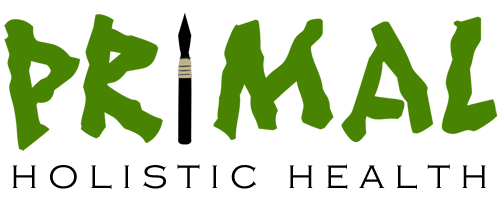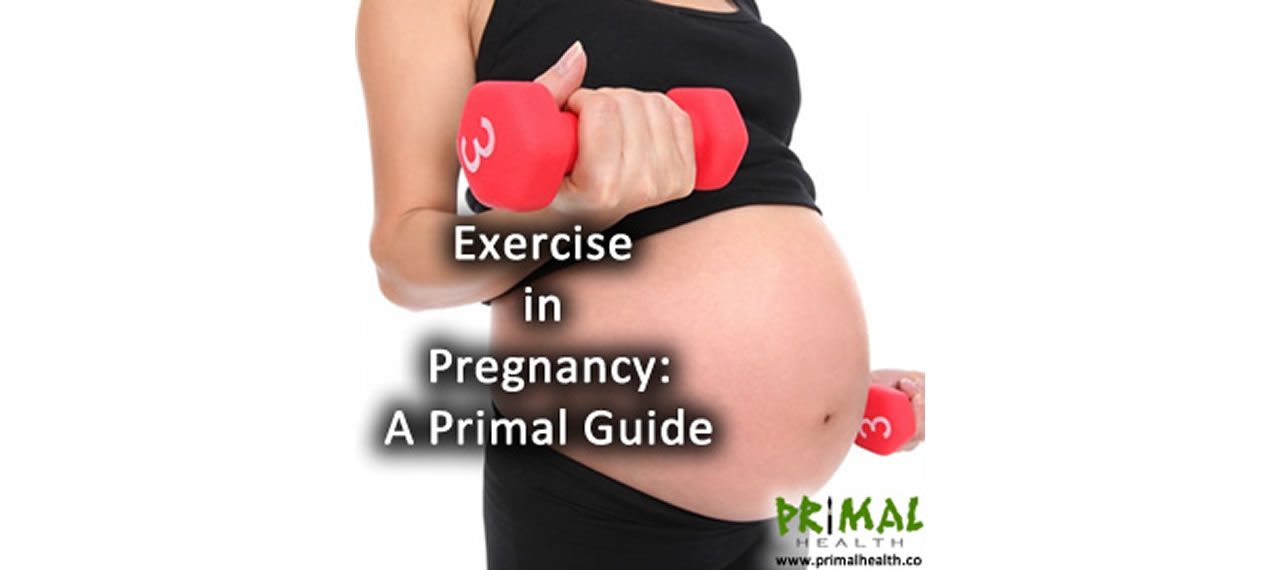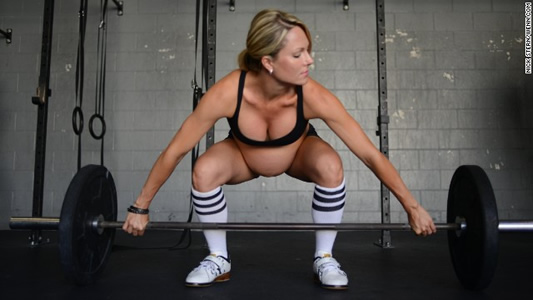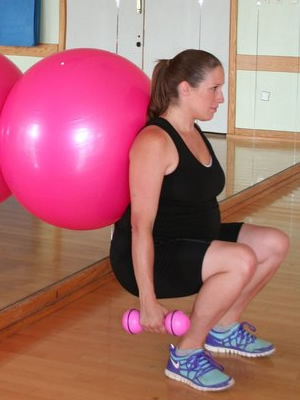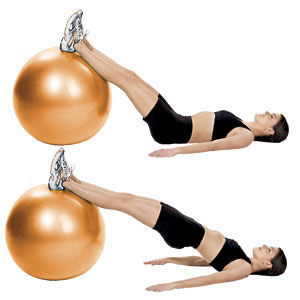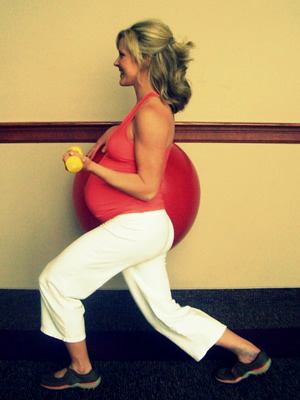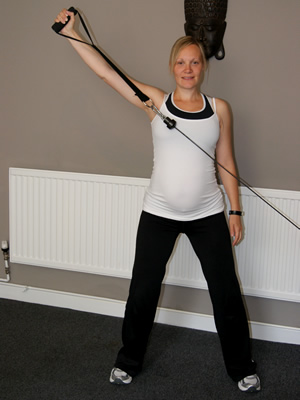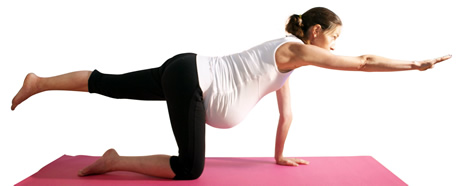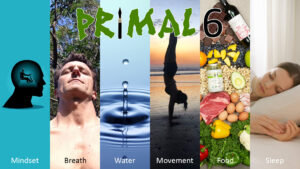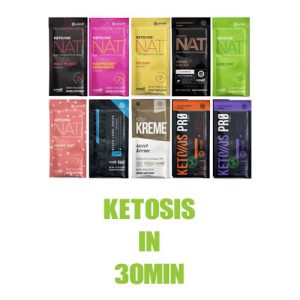What do pregnant women and new mums need to know about exercising safely for the health of themselves and their babies? How much exercise is enough or too much? Which types of exercise are best and which should be avoided? Here’s your primal guide to exercising in pregnancy.
Internal body temperature
When exercising during pregnancy, you are essentially exercising for 2 people! Hence there are several things you need to think about. Pregnancy is not the time to start sculpting a new body. It is a time for maintenance only. Keeping your internal temperature regulated is very important to prevent overheating the foetus. If you are not very in sync with your body and do not know how to perceive your rate of exertion effectively, you can wear a heart rate monitor to provide this feedback. The average beats per minute you should aim to keep it below is 150bpm or a 7/10 on the exertion scale, 10 being a full on workout!
Pregnancy hormones and hip flexibility
During this time it is important not to load your joints past their passive range of motion. This is because the hormones Relaxin and Elastin are both elevated during this time. These hormones soften up the ligaments, tendons and connective tissue to allow the baby’s head to come through the birth canal, so your joints can become around 10 times as loose as they usually are which can lead to hypermobility, especially if you already score high on the 9 point flexibility test. Injuries can then become commonplace, hence reduce the depth and intensity of your exercise and don’t excessively hold stretches for a long period of time.
Supine hypertensive syndrome
When lying down on your back (supine position) for 2 minutes or more, the weight of the baby can press down on the inferior vena cava which blood from the pregnant uterus flows. This increased pressure can be transmitted to the placenta and could compromise fetal blood flow in the gas-exchange area, thereby limiting oxygen supply to the fetus. Therefore, it’s best to choose exercises that don’t have you lying on your back for more than a minute or so, especially as you get further along in the pregnancy.
Exercise intensity
How intense your exercise during this part of your life is, is dependent on your original fitness levels. I’ve known plenty of personal training friends of mine to still be exercising and teaching classes even on their labour day! Know your body and monitor changes and symptoms.
The importance of stability
As you progress through the trimesters and your weight increases, it is important to realise that your center of gravity has now moved, and stability will play a more important role with you every day. Exercise using equipment that assists in your stabilisation will be an important thing to consider.
Great pregnancy exercises
Conditions that must be monitored
– Hypertension
– Anaemia
– Thyroid disease
– Diabetes
– Extremely over or under weight
– Extremely sedentary
– Breach presentation in third trimester
– History of bleeding during pregnancy
NO exercise when you have one of these conditions
The ACOG (American College of Obstetricians and Gynaecologists) lists the following conditions as indicators for people who should not exercise drink pregnancy:
– History of three or more miscarriages
– Ruptured membranes
– Premature labour
– Diagnosed multiple pregnancies
– Intra-uterine growth retardation
– Incompetent cervix
– Placenta praevia
– Pregnancy induced hypertension
– Venous thrombosis or pulmonary embolism
– Known cardiac valve disease
– Primary pulmonary hypertension
– Maternal heart disease
Stretchmarks
Stretch marks are caused when the skin is stretched or overstretched, resulting in skin tearing. In this process collagen and elastin fibres are broken down and scar tissue is formed. Stretch marks most frequently occur on the breasts, abdomen, thighs, groin or bum. The condition of your skin prior to pregnancy greatly influences whether you develop stretchmarks. Dry skin is less elastic and tears more easily. Therefore prevention is better than cure! Drinking plenty of high-quality filtered water, and keeping your skin healthy and supple, is very important for prevention. Whilst there are plenty of creams out there, I’m a big believer on working inside-out rather than outside-in. If you do want a cream, consider using virgin coconut oil instead. Yes the one that you cook with!
Exercising after pregnancy
To be on the safe side you should not exercise until 6 to 8 weeks after birth. If you’ve had a C-section, then 12 weeks. The uterus can take up to 6 weeks to shrink back to its normal size and for the internal organs to return to their normal positions.
Stability exercises for the hip, core and back areas are very important at this time. Avoiding jumping, running and stepping are important too as these can cause incontinence, hernias and other gynaecological issues.
Allow one hour of recovery after exercise before feeding your baby. This is because after your work out your PH level will be elevated due to higher amounts of lactic acid in your blood from the exercise you have just done. This can affect the taste of the milk and potentially put the baby off their feed. If this happens a lot, this could turn the baby off breastfeeding altogether.
Breastfeeding – The jaw and the core
Breastfeeding is far more important than you think. It is an important stage of the 6 stages of physical infant development, in particular core strength and development. The movement of the mandible (jaw) backwards and forwards when breastfeeding causes a co-contraction of the abdominal muscles of the baby and acts as a pump for cerebrospinal fluid to move from the skull to the sacrum. Were you breastfed? For how long? Try sucking on your thumb and placing your other hand on your abdominal area and see if you can feel the abdominals moving in and out as you suck on the thumb. If you can, this is a good indicator to show you have good communication between the jaw and the core.
Exercise in Pregnancy – A Primal Guide – October 2013
